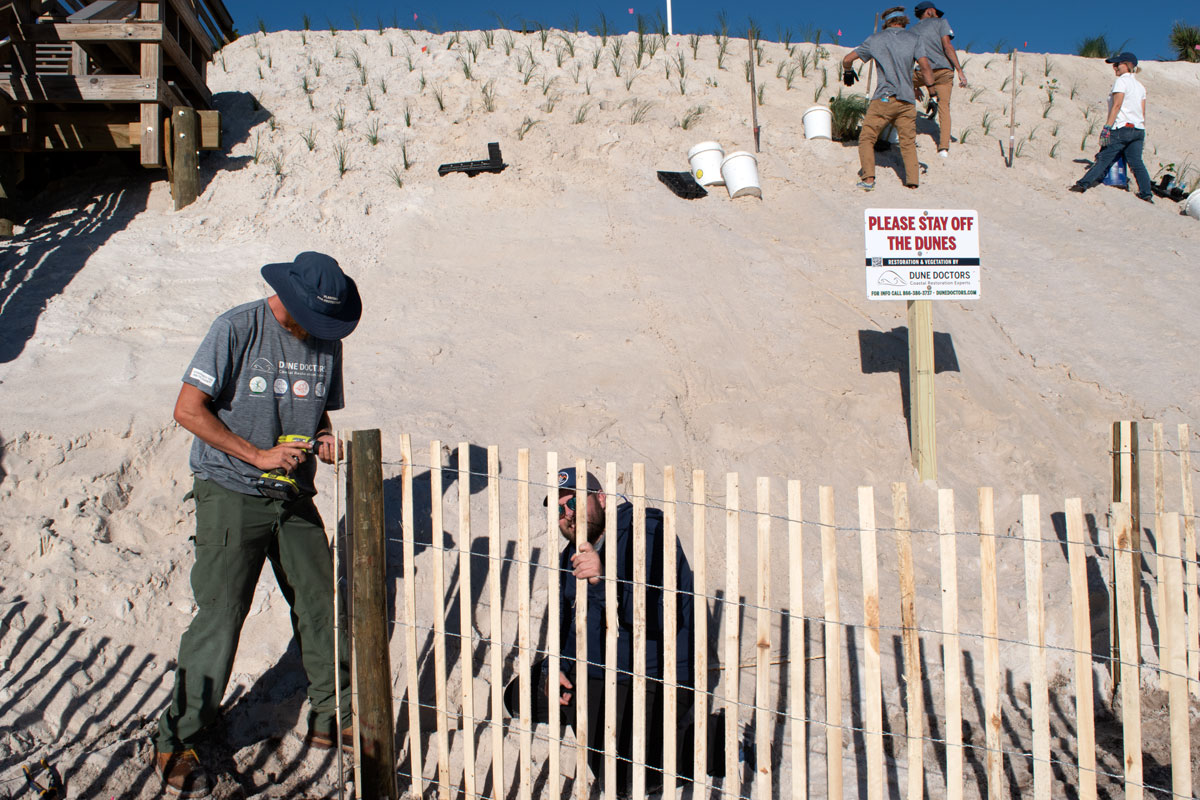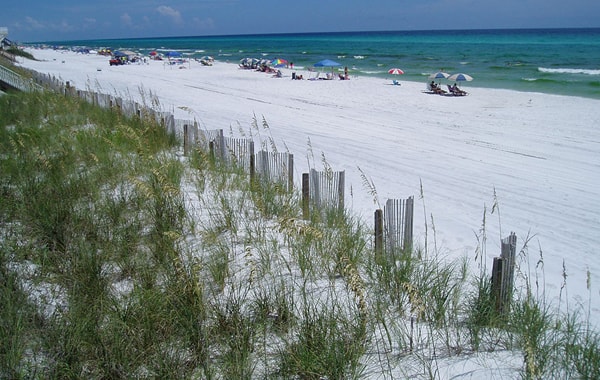Sand Fences are the Most Economical Solution to Limit Coastal Erosion
The coastal environment is incredibly dynamic as multiple forces combine to cause the continual reshaping and erosion of the dunes and the beaches. Natural dunes exist in disconnected mounds along the coastline. These rapid changes in the environment can sometimes affect the long-term vision coastal homeowners have for their property because disconnected dunes cannot offer significant protection. Therefore, sand fencing is the most economical and effective method of fortifying and sculpting dunes into a continuous berm that will retain its linear shape and build a line of defense against the impact storm surges can have.

Examine the Type of Erosion Your Dunes are Undergoing
At the end of a hurricane season, identifying the type of erosion-based damage your dunes incurred is essential to designing an effective restoration plan. A dune suffers erosion through wave action, stormwater runoff, and foot traffic. These events can damage the dune, resulting in a blowout, a dune cliff, an unvegetated dune, or the complete elimination of the dune. In most cases, the strategic installation of sand fencing paired with healthy dune-building vegetation is sufficient to accelerate your dune’s recovery. If stormwater breached and caused significant damage to your dunes, the best course of action for the creation of a new berm will be to add sand, plant dune-building vegetation, and install sand fences.
1. Dune Blowout: A Wide Depression in Your Protective Dune
A blowout is an unvegetated depression or trough in your dunes. Conditions for a blowout are met when repeated disturbances to a section of the dune result in killing the vegetation meant to anchor the sand in place. Unvegetated sand enters a heightened state of erosion and cannot weather or protect against the impact of a powerful storm event. Eventually, storm surge will find the path of least resistance to breach the dune, push landward through the unvegetated depression, and erode the loose sand. The result is a massive gap in the dune’s formation that will continue to widen unless addressed. The best way to handle a blowout is by placing new sand to realign the dune and to stabilize the placement with dune building vegetation. While the vegetation stabilizes the added sand, initiating a new protective berm at the dune’s toe (the place where the dune’s slope meets the flat of the beach) can provide an additional barrier that can absorb the impact of storm surge. Under ideal circumstances, coastal homeowners will invest in creating multiple rows of protective berms to capture as much free sand as possible and protect the established dune closest to their homes. The goal is to achieve the reassurance that if multiple major storm events happened with short intervals the different rows would provide a series of buffers.
2. Dune Cliff: A Vertical, Highly Collapsible Sand Wall
After 2020’s busy hurricane season, repeated storm surge impacts have carved away at dunes, leaving behind highly unstable sand cliffs. In the weeks following the storm, the soaked sand cliffs retained their shape because the sand was wet. Once it dried, they began to collapse into a more natural slope. After the collapse has occurred, Dune Doctors reccomends carefully installing dune-building vegetation to anchor the new slope in place. To further strengthen the dune, Dune Doctors then installs a new row of sand fences along the dune’s toe (the place where the dune’s slope meets the flat of the beach) to encourage the dune’s gradual incline.
3. Unvegetated Dune: Bare Areas Resulting from Dying Vegetation

After storm surge tears away dune-stabilizing plants, the structural integrity of a dune is compromised. While the damage of a single storm event will be immediately apparent, two other forms of ongoing erosion will have a longterm impact as well. Foot traffic erosion and stormwater runoff are both year-round forces that can significantly weaken your dune by killing off the plants that anchor it in place. As stated earlier, conditions for a blowout are met when repeated disturbances to a dune result in a bare area that becomes a depression. Dune-building vegetation has evolved to survive drought, powerful winds, intense sunlight, and being temporarily submerged in water. However, the plants’ horizontal stems have not evolved to survive localized pressure and will snap under foot traffic. Beachgoers need to be encouraged to stay off the dunes via signage or roping. To help minimize foot traffic damage to dunes that extend past your boardwalk, Dune Doctors recommends roping off a narrow walkway that is the boardwalk’s width to keep beachgoers from fanning out across the dune. Stormwater runoff often drains below and around the property’s boardwalk. Routine revegetation is necessary to protect the boardwalk’s foundation and strengthen that area of the dune.

4. Complete Erosion: What to do when the Entire Dune has Washed Away
In cases where the dune has suffered complete erosion, sand placement becomes an urgent solution to protect the building’s structural base. Once placed, the sand by itself cannot offer significant protection. Therefore, sand placement must be paired with dune-building plants to help anchor the added sand in place. Otherwise, the next storm event will, yet again, quickly erode the costly investment.
Sand Fences Initiate Continuous Berms and Provide Strategic Protection
The dune’s elevation and shape are critical. Powerful waves can push their way through unvegetated grooves and foot paths that cut through the dune. When storm breaches the dune it causes damage landward. The end goal of sand fence installations by Dune Doctors is to create a continuous protective berm. The sand fencing can be used to initiate the accumulation (accretion) of sand in a strategic shape. The installation of sand fencing to accrete sand in a specific location helps to limit the natural tendency of dunes to form in irregular shapes while still providing beachgoers ample access to recreational beach areas.
